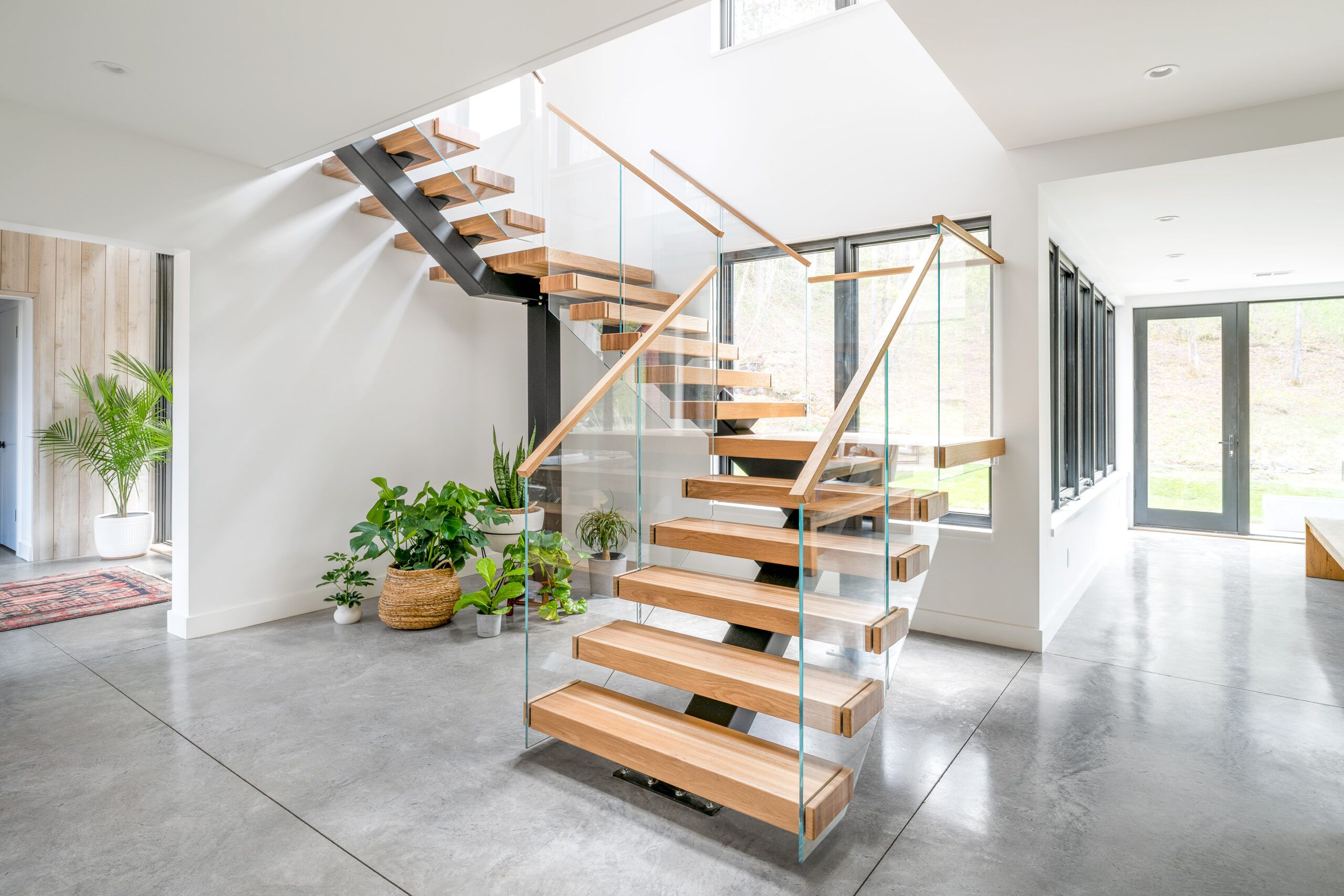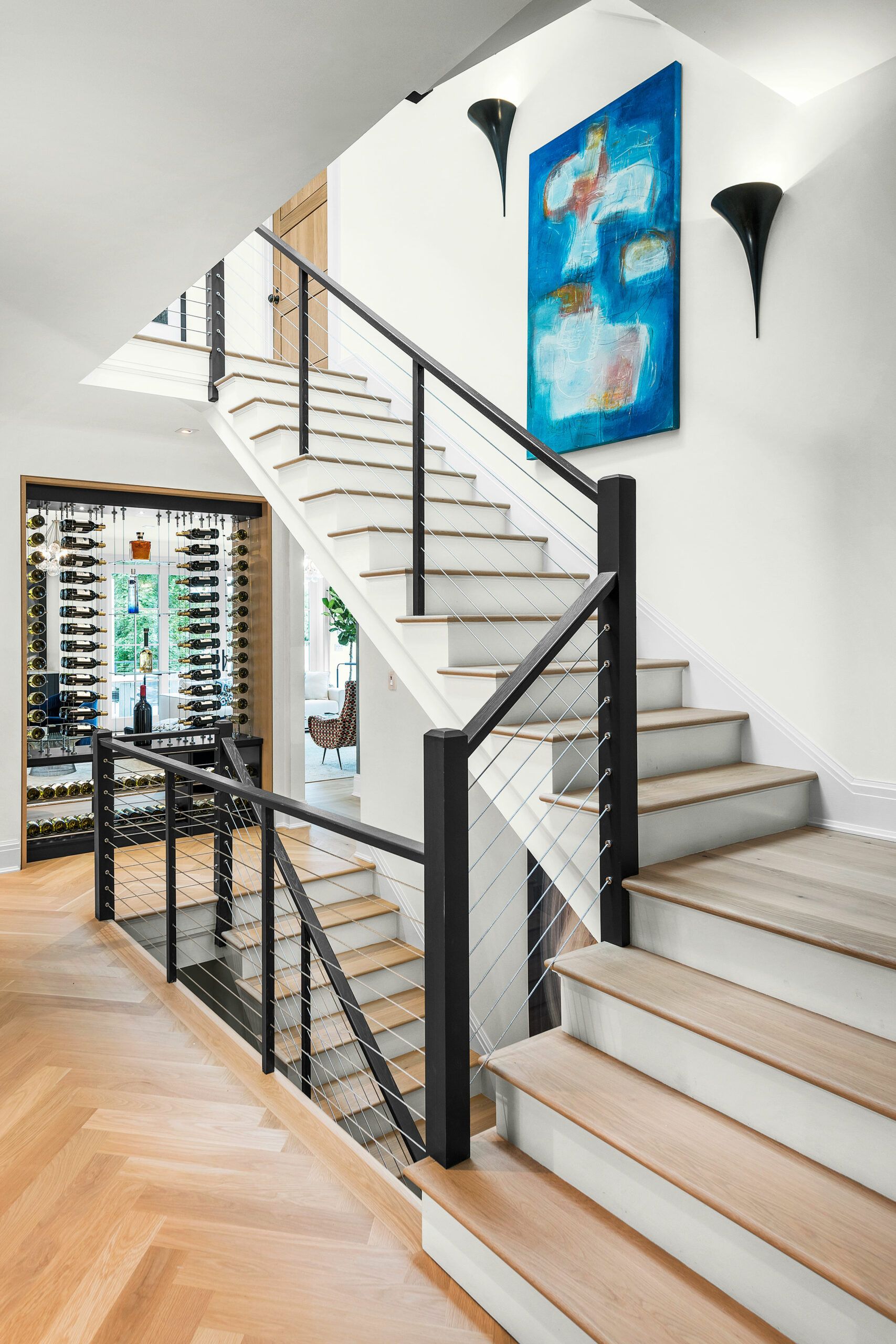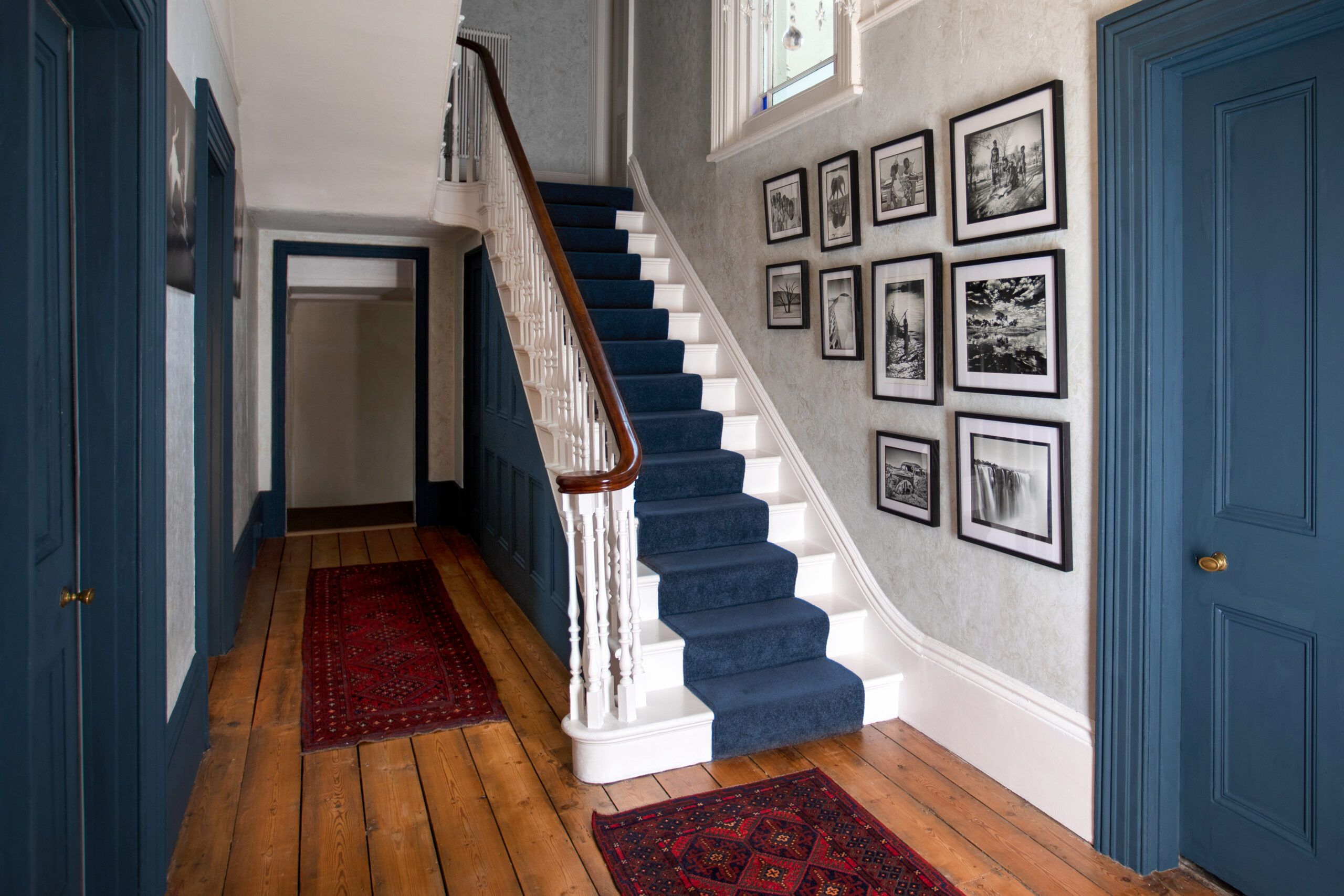If you happen to live in or have recently visited an old house, one of the things you’re bound to notice is the stairs. Before the advent of building codes, most stairs were built as the carpenter saw fit. The space allotted determined the staircase, so you’ll often see a flight of stairs as steep and narrow as a ladder.
Although most building codes are based on the International Residential Code, some locations may not have adopted the latest version of the IRC. There are variations from town to town and state to state, so check with your local building official. If you’re building a set of stairs or retrofitting an existing staircase, here’s what you’ll need to know:
First, let’s define some terms. A staircase has a rise (its height from bottom to top) and a run (its length). A horizontal step is called a tread, and the vertical piece that fits between two treads is called a riser. The part of the tread (often rounded) that overhangs the riser is known as the nosing. A landing is a horizontal platform that begins or ends a staircase or forms a transition between changes in stair direction.
Residential Interior Stairs Code Requirements

- The stairway must be at least 36 inches wide, measured above the handrail.
- Handrails must not project into the stairway more than 4 ½ inches—so with one handrail, the stairway can’t be less than 31 ½ inches wide, as measured at or below the rail, and with two handrails, the stairway can’t be less than 27 inches wide.
- Stairs in unfinished basements or attics shouldn’t be less than 32 inches wide, measured above the handrail. Handrails should not project more than 4 inches into the stairway— so the stairway should not be less than 28 inches wide, measured at or below one handrail, or not less than 24 inches, as measured at or below two handrails.
- Treads and risers should be level, with a maximum slope of less than two degrees.
- Treads with nosings have to be at least 10 inches wide and 11 inches wide without nosings, measured from the leading edge to the back, and there can’t be more than a 3/8-inch variation in tread width throughout the entire staircase.
- Tread nosings can’t project more than 1 ¼ inches or less than ¾ inch beyond the plane of the riser and can’t have a radius greater than 9/16 inch, as measured in cross-section.
- Risers can’t be more than 7 ¾ inches high, as measured from one tread to the next, and like the tread width, they can’t vary more than 3/8 inch over the entire staircase. Open risers, such as those commonly seen on outdoor deck stairs, must be sized so a sphere larger than 4 inches in diameter can’t pass through.
- Landings must be at least as long as the stair is wide; a 36-inch-wide stair will need at least 36 inches of space at the top or bottom.
- A landing isn’t required if you have a door at the top of the stairs that swings into the space above. If the door swings out over the stairs, you must have a landing that’s at least 36 inches long or longer if the door is over 36 inches wide.
- You must have at least 6 feet 8 inches of headroom (measured vertically) at all points between the ceiling and the stair nosings.
- A continuous flight of stairs is allowed to rise to only 12 feet 7 inches between floor levels or landings. Flights that rise higher than that need to include a landing.
Handrails Code Requirements
- Stairs with more than four treads and risers should have at least one handrail that’s between 34 and 38 inches high, as measured vertically from any nosing on the stair. The only exception to this is for transitions between flights of stairs, where the height of the railing is allowed to be higher than 38 inches.
- The handrails themselves should be easy to grasp. Here the code gets very specific and classifies handrails as either Type I or Type II.
Type I handrails round in cross-section must have an outside radius of between 1 ¼ and 2 inches; handrails with a non-circular cross-section can have a total perimeter dimension of between 4 and 6 ¼ inches, with a maximum cross-section of 2 ¼ inches, and edges with a minimum radius of 0.1 inch.
Type II handrails must be between 1 ¼ and 2 ¾ inches across the top, at least 1 ¾ inch high, and have a perimeter dimension of more than 6 ¼ inches. All handrails must be at least 1 ½ inches from the wall.
Guardrails Code Requirements

- At open spaces on stairs or landings, guardrails must be installed anywhere above a height of 30 inches and must measure between 34 and 38 inches high from either the tread nosing or floor.
- Balusters (spindles, etc.) on landings must be spaced close enough so that a 4-inch-diameter sphere can’t pass between them. Balusters on the open sides of stairs can’t allow anything larger than a sphere 4 3/8 inches in diameter.
- The triangular space created by the tread, riser, and bottom rail of the guardrail can’t allow anything larger than a sphere 6 inches in diameter.
Stair Lighting Code Requirements
Stairs are only safe if you can see where you’re going, so lighting is important and included as part of the building codes.
- Interior stairs must be illuminated so that you can see both treads and risers.
- There must be a switch in the stairway for the light, and if the stairway has more than six risers, you are also required to have a switch for that light at both the top and bottom of the stairway, unless an automatic or motion-controlled switch controls the light.
- Exterior stairs are required to have a light source at the upper landing

